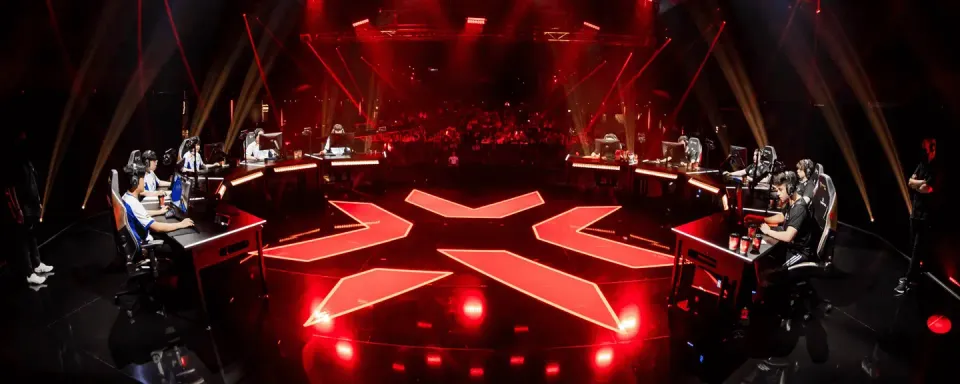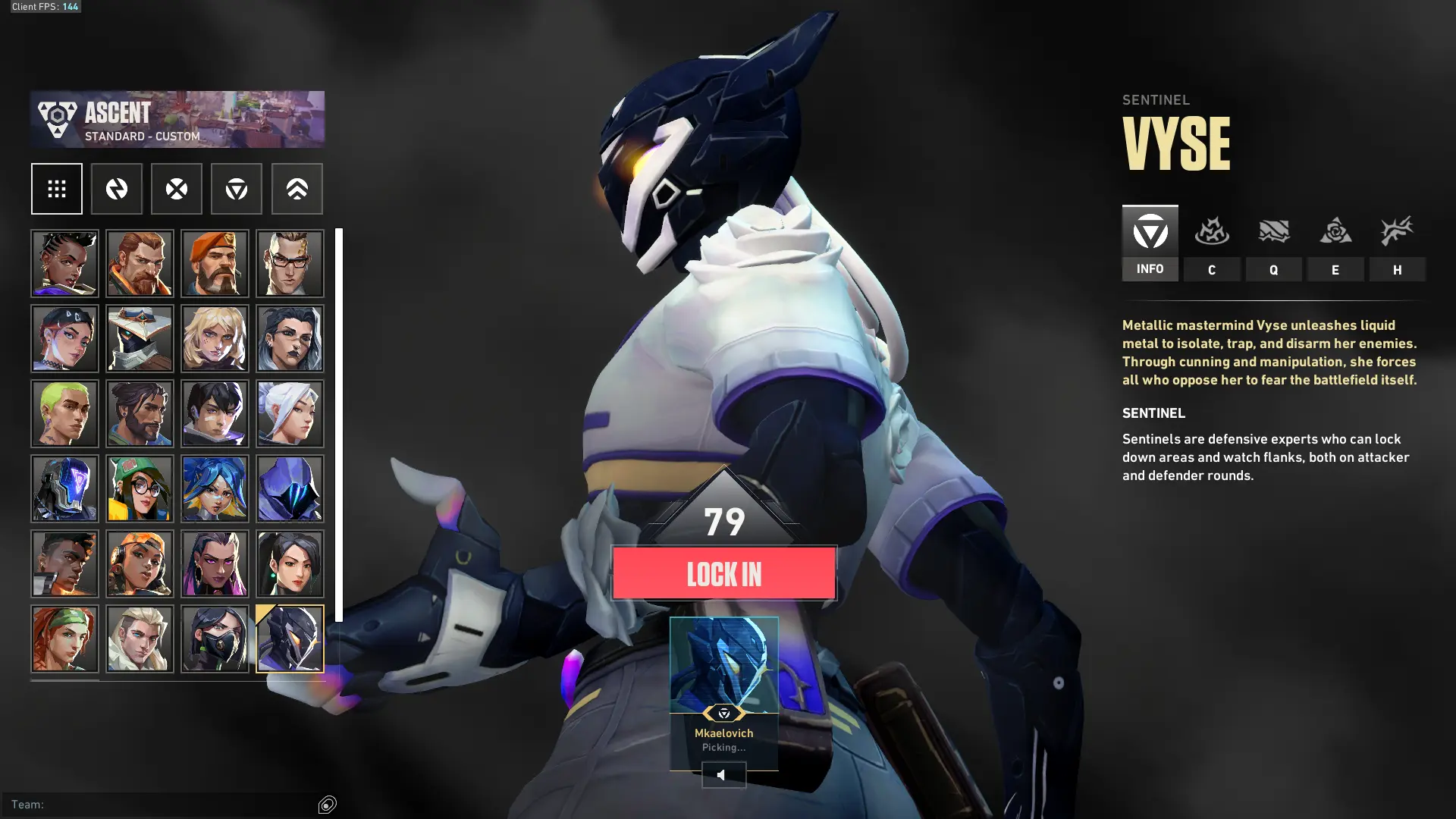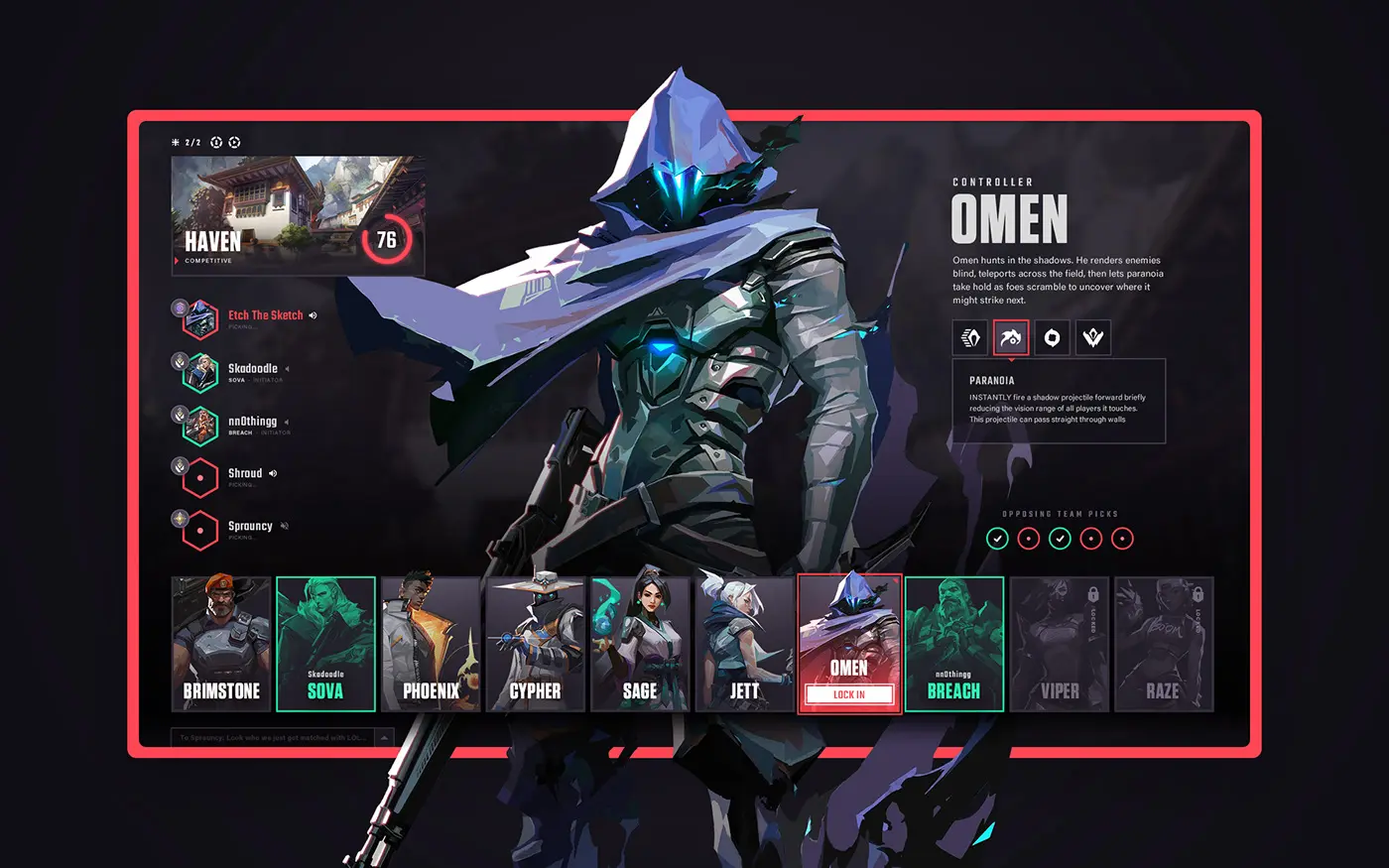- Mkaelovich
Article
10:29, 23.11.2024

The esports discipline of Valorant is evolving as rapidly as the game itself, especially with the addition of new agents. This raises the question for both professional and casual players: is now the right time to introduce a ban system in the game? With 25 unique agents currently in Valorant, such a system could significantly alter the meta and add variety to both the professional scene and ranked play. Let’s take a closer look at whether the time is ripe to implement a pick-and-ban system in Valorant.
In this article:
What is a ban system, and how does it work?
A ban system allows a team, during the agent selection stage, to prevent the opposing team from picking certain agents. This adds a layer of strategy, as bans must consider:
- Opponent strengths: banning an agent critical to the opposing team’s playstyle or strategy.
- Match map: some agents are highly effective on specific maps, such as Killjoy on Ascent or Viper on Breeze.
- Combinations: certain agents work exceptionally well together, and banning one can disrupt these combos.
In games like League of Legends and Dota 2, the ban system is a key element of esports matches, where teams can gain a significant advantage during the selection phase. While Valorant isn’t a MOBA and has fewer characters, similar examples exist in other shooters, such as Rainbow Six Siege.

How could a ban system look in Valorant?

Given the relatively small number of characters in the game, the system could allow for banning just one or two agents before the selection phase. Each team would have the opportunity to ban one agent from the opposing team's pool. If players within a team vote for different bans, the agent with the most votes would be blocked. In case of a tie, the ban would be selected randomly from the proposed agents. After the ban phase, agent selection would proceed as it does now.
Potential benefits of introducing bans in Valorant
Greater strategic depth
The ban system would force players in ranked and professional teams to think more strategically and plan their matches in advance. In ranked mode, players would collectively decide whom to block, while professionals would base their decisions on analyzing opponents. For instance, Clove dominates ranked play with nearly a 53% win rate. Banning her on maps like Ascent or Haven would force opponents to choose a less convenient agent.

Counterplay to meta agents
Every patch introduces new meta agents with stronger abilities. As of November 2024, Clove is one such agent. With a ban system, players could block frustrating or overly strong agents, allowing them to influence the meta without waiting for patch updates.

More variety in gameplay
Banning frequently used agents would encourage teams to experiment. For example, banning Gekko or Sova might lead teams to choose Fade or KAY/O for similar roles.
READ MORE: Complete guide to the Haven map in Valorant
Potential risks and downsides

Insufficient number of agents
With only 25 characters, Valorant has far fewer than most MOBA games. Allowing multiple bans could limit choices and create imbalances, especially for new players who haven’t unlocked all agents yet.
Impact on ranked mode
Casual players don’t have as much time as professionals to master a large pool of characters. Introducing bans could be problematic for both newcomers and experienced players whose favorite agents are consistently banned.
Players may not be ready
Most casual players may not yet be prepared for such a system. Agents in matches may often be randomly banned. For the esports scene, however, a ban system seems more appealing, as it could significantly impact the meta and increase viewer interest with new strategies and characters.


Comparing Valorant with other games
League of Legends / Dota 2
These games are prime examples of how a ban system can positively influence gameplay. During the pick-and-ban phase, the fate of a team can be determined if players select weak or poorly synergized characters. However, since these aren’t shooters, the comparison isn’t perfect. Additionally, the number of characters in these games far exceeds that in Valorant, meaning bans in MOBAs don’t impact gameplay as much, as there are always plenty of alternatives.
Rainbow Six Siege
Another example is Rainbow Six Siege (R6S), where the operator selection and ban stage is also successfully implemented. Players ban operators, adding variety to matches and reducing the repetitive use of the same characters, as is currently the case in Valorant. However, Rainbow Six Siege features 74 operators, whereas Valorant, as of November 2024, has only 25 agents, with about 3–4 new agents added each year.


Is a Ban System Timely for Valorant?
At this stage, implementing a ban system in Valorant seems premature for ranked play due to the limited number of agents and the risk of complicating the game for less experienced players who may not yet fully understand the game or have unlocked all characters.

On the professional scene, some players have hinted they wouldn't mind introducing bans to shift the meta. However, this idea remains experimental and risky. It is unlikely that such a system will be introduced in the VCT tournament series. Still, it could be tested in offseason events to gain new perspectives on the game and understand how it would work in practice.
Conclusion
The agent ban system in Valorant has the potential to become an important element of the game, but the time for its implementation has not yet come. With only 25 agents available, even banning one or two could significantly impact newcomers or players who don’t have all characters unlocked.
For the esports scene, certain tournaments could experiment with this system to gauge the community’s and players’ reactions and assess how it changes the meta during the event. This could help Riot Games make an informed decision about whether to introduce bans and picks into regular franchise leagues in the future.
Upcoming Top Matches
Latest top articles







Comments